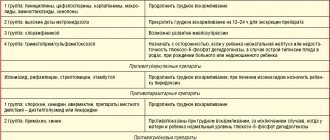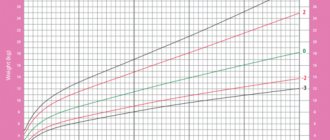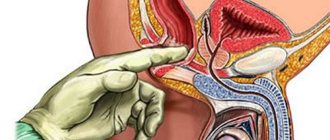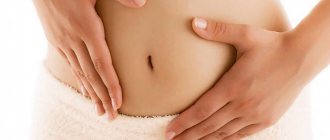Features of the diet when feeding a baby with breast milk, what foods you should pay attention to.
Breast milk is the ideal food to ensure healthy growth and development of your baby. All beneficial substances contained in milk enter it from the mother’s body. Therefore, she definitely needs to maintain a healthy lifestyle and replenish her reserves of essential substances with proper nutrition.
As during pregnancy, you need to eat not for two, but for two. That is, special attention should be paid not to the quantity of products, but to their quality.
It is very important that every day, with food, the body of a nursing mother receives about 40 essential nutrients that the human body cannot produce on its own. Among them are vitamins and microelements (the source of which are vegetables, fruits, cereals, milk and dairy products), amino acids (found in meat and meat products), as well as polyunsaturated Omega-3 and Omega-6 fatty acids (there are a lot of them in fish and vegetable oils).
To provide the body with such a set of nutrients, your diet must not only be sufficient in calories and well balanced, but also varied.
Join the Similac club “Growing Together!” and receive discounts, gifts and advice from experts.
Join the club →
Postpartum diet - is it necessary?
Experts have different opinions, but most recommend sticking to a diet in the first months, because after birth, new processes begin and are set up in the baby’s body, and to support them you need a base of nutrients, vitamins and microelements. The only source of all this for the child’s body is mother’s milk.
.
Absolutely everything a woman consumes is absorbed into the milk formula. Therefore, it can be both a high-quality springboard for the development of a child and an irritant. In order for all organs and systems to develop well, milk must be of the highest quality.
Proper nutrition during pregnancy helps you quickly get rid of extra pounds without causing harm to the body.
In addition to the direct effect on the lactation product, proper nutrition helps the mother restore her own vital processes and recover from stress.
After childbirth, the body is weakened because it has suffered a great hormonal and physical shock, and to maintain its functioning, the strength that a woman receives from food is needed.
In case of malnutrition or poor nutrition, insufficient fluid intake, the body is depleted and physically cannot function normally. The health and appearance of the young mother deteriorates.
Drinking regime of a nursing woman
Since a nursing woman’s body produces up to 1 liter of milk daily (and sometimes more), she simply needs to increase her fluid intake by about the same amount. This could be drinking water, special teas for nursing women (should be consumed with caution, after consultation with a doctor), fortified juices for nursing mothers and fermented milk drinks (also taking into account individual tolerance). And no alcohol! In general, the liquid portion of the daily diet, including soups and drinks, should be within 2 liters.
There is a myth:
The more fluids a nursing woman drinks, the better. But this is not entirely true. Indeed, if you drink a lot of liquid, the amount of breast milk may increase slightly, but its composition will deteriorate - the milk will become more “diluted”.
The main task of a mother, oddly enough, is first of all to take care of her health, establish a diet and sleep pattern. Only in this case can you count on the baby getting everything he needs without compromising his mother’s health and beauty.
Basic principles of nutrition after childbirth
The postpartum diet is not aimed at losing weight; it should not be too tough and debilitating. It is best to contact a specialist to draw up a nutrition plan, because the diet must be selected individually
for each mother and based on the state of the immune system, microflora and the presence of any allergies.
All mono-diets
, food should be
varied
. When following a diet, every mother should adhere to several principles.
No need to eat for two
This is the most common mistake among young mothers. In this situation, the decisive factor is quality, not quantity; the new mother does not need to eat twice as much. Even in a normal, non-pregnant state, overeating is fraught with poor health and severe stress on the digestive system.
Milk should not be “empty”, but also not oversaturated, because this will put a strain on the child’s gastrointestinal tract, and some foods consumed in large quantities can cause allergies, colic and bloating in the baby.
Food diary
To systematize food intake and track the baby’s reaction to certain foods, it is recommended that every mother keep a food diary. It needs to be maintained regularly and all foods introduced into the diet must be included. Its pages look like this:
| Product introduction date | The product's name | Child's chair | Skin | General condition of the baby |
| The new product is tried in the first half of the day in small quantities. After two days, the child’s reaction is monitored. | Everything unusual is noted: the presence of greenness and yellowness, consistency, sliminess, color and multiplicity. | Presence of rash, irritation. | Moodiness, sleep state, temperature, gastrointestinal tract function (colic, bloating, diarrhea, vomiting). |
Products should be introduced gradually and all changes in the child’s well-being should be recorded in a diary. If there are people in the family who suffer from allergies or the mother herself is allergic, you need to use new products with extreme caution.
Templates for food diaries can be found on the Internet or drawn out in a notebook yourself.
Stop products
The list of products that a woman consumes during lactation may vary depending on the age of the child and the duration of breastfeeding. But doctors recommend removing some foods from the diet for the entire period of breastfeeding. Doctors give a list of them upon discharge; the list of prohibited ones almost always includes:
- canned meat, dairy and fish;
- pickles (store-bought and homemade);
- ketchup and mayonnaise;
- vegetable marinades;
- semi-finished products;
- whole cow's milk;
- hot and spicy sauces, soy sauce is possible;
- legumes (can only be used in very small quantities, as they are a gas-forming product and may cause the child to swell);
- strong coffee (it’s better to remove it altogether) and tea;
- packaged juices;
- alcohol;
- nuts;
- grape;
- White cabbage;
- chocolate;
- processed cheeses and blue cheese;
- sausage products.
Dishes containing these products can cause bloating and colic in your baby. Mother's milk, which contains impurities and elements of these foods, has an irritating effect on the baby's unadapted stomach. So that the child does not become capricious and sleep peacefully, it is better not to eat this food.
[media=
https://youtu.be/HXTLJMnKU1c
]
Vitamins for nursing mothers
It has been established that the content of vitamins and minerals in the body of a breastfeeding mother is 20-30%, and for some components 50-60% lower than normal. Talk to your doctor about choosing a good vitamin/mineral supplement and specialized foods for your breastfeeding period.
Requirements for vitamins and minerals for women during breastfeeding*
| Indicators per day | Nursing |
| Vitamins | |
| Vitamin C, mg | 120 |
| Vitamin B1, mg | 1,8 |
| Vitamin B2, mg | 2,1 |
| Vitamin B6, mg | 2,5 |
| Nicotinic acid, mg | 23 |
| Vitamin B12, mcg | 3,5 |
| Folic acid, mcg | 500 |
| Vitamin A, mcg, ret. eq. | 1300 |
| Pantothenic acid, mg | 7 |
| Vitamin E, mg current. eq | 19 |
| Vitamin D, mcg | 12,5 |
| Minerals | |
| Calcium, mg | 1400 |
| Phosphorus, mg | 1000 |
| Magnesium, mg | 450 |
| Iron, mg | 18 |
| Zinc, mg | 15 |
| Iodine, mcg | 290 |
| Copper, mg | 1,4 |
| Manganese, mg | 2,8 |
| Selenium, mg | 65 |
*Pocket recommendations on pediatrics, edited by MD, Prof. T.N. Zakharova, 2019
If a woman has bad habits (smoking, alcohol), then she is definitely recommended to take vitamins.
It is very interesting that modern evidence-based medicine has not found confirmation of some of the advice of our grandmothers and mothers, namely:
- Drinking a lot of milk to increase lactation - a direct relationship between the amount of breast milk and the volume of milk consumed has not been confirmed.
- Eating for two - for yourself and for the baby. In fact, nature is so wise that it adjusts the nutritional value of breast milk to the needs of each woman's child.
First postpartum trimester
It is during this period that nutrition should be monitored especially carefully. It is important not to irritate the child’s body, which is not yet accustomed to anything. Each nutrition plan is compiled according to the universal recommendations of doctors, but taking into account the individual needs of the mother. The diet for a nursing mother in the first days may consist of:
:
- yesterday's or dried bread;
- buckwheat, boiled in water and seasoned with vegetable oil;
- stewed or boiled beef.
Be sure to follow the drinking regime and consume at least 2 liters of liquid per day during the entire feeding period. This is important for lactation and the general well-being of the mother. On the third and fourth days you can expand the menu and add:
- baked fruits;
- steamed or baked vegetables (zucchini, cauliflower, carrots, pumpkin, potatoes) light salads;
- dairy products;
- drinks made from dried fruits (dried apricots, prunes);
- vegetable broths;
- whole grain porridge.
Now the mother can relax more. After a week, you can gradually start eating:
- boiled lean fish;
- low-fat and low-concentrated meat broths;
- green fresh apples;
In the third week, mom can still diversify her diet. The child’s enzymatic system is almost established, as is the intestinal microflora. A woman is allowed:
- chicken eggs (do not overuse proteins, they can cause allergies in the baby);
- fruit drinks;
- porridges, cereals in soups;
- dry cookies and biscuits;
- beets, broccoli and boiled cauliflower.
There should be 5 meals a day (breakfast, light snack, lunch, snack, dinner). Portions should be small (so that the contents of the plate fit on two palms). It is important to avoid feelings of extreme hunger and thirst; you need to eat every 3-4 hours.
Proper nutrition for a nursing mother
Holidays are an occasion for feasting. What should a nursing mother remember during the holidays?
- It’s better not to try a completely new product or a dish made from it.
- No more than one glass of dry wine per holiday; drink plenty of plain water at the holiday table.
- Don't forget to pump on time.
- If the child does not have colic, then everything is possible, or almost everything, if you are familiar with all the products.
- If a child suffers from colic, we advise you to exclude sour cream, mayonnaise, spicy, pickled, fatty foods, grapes, and sweet carbonated drinks.
- If your baby is prone to rashes, exclude tropical fruits, strawberries, raspberries, red caviar, fish, seafood, and smoked meats.
Share on social media networks
Second postpartum trimester
During this period, you can expand your food intake, but nutrition should still be correct and balanced. While at 3-6 months of breastfeeding, the mother is allowed to:
- seasonal vegetables and fruits in raw form;
- lean borscht seasoned with tomato juice or pasteurized tomatoes;
- nuts (except pistachios and peanuts);
- rabbit meat;
- homemade cherry and apple jam;
- lingonberry, cherry and currant fruit drinks;
- honey in small quantities;
- freshly squeezed juices from pumpkin, carrots, beets, apples;
- fresh onions;
- fresh and dried spices: basil, lemon balm, thyme, tarragon, celery, oregano.
Stop foods are still not allowed! If your child has a rash or gastrointestinal disorders, contact your pediatrician and take a food diary.
About the importance of drinking
It is important to drink enough fluid – up to two to two and a half liters per day. This can be water, weak tea (preferably green), dried fruit compote, apple or pear juice.
Strong tea and coffee should be limited (consume no more than 200 mg of caffeine per day, one cup of coffee contains 60-150 mg of caffeine, and tea 30-60 mg.)
Do not drink sugary carbonated drinks; they contain large amounts of sugar, flavorings and colorings.
It is advisable to limit whole cow's milk in your diet (up to 600 ml per day); this product is in first place on the list of food allergens in infants. For the same reason, use strong broths and cocoa with caution.
From 6 months to a year
The list of permitted foods remains relevant, but now a young mother can sometimes treat herself to delicious fried, but not fatty foods; steamed and boiled foods should prevail.
Smokers should definitely give up the habit while breastfeeding.
You can also now try (not eat regularly) garlic, seafood, legumes and dark dark chocolate; it is best to eat these foods in the morning.
Strictly prohibited products remain: condensed milk, sweet soda, mayonnaise and ketchup, margarine, refined sugar, fast food, pickles and smoked foods, ice cream, baked goods and baked goods with fillings, semolina, sausages and canned food.
What can nursing mothers eat from 0 to 3 months?
Despite many restrictions, breakfasts, lunches and dinners for a nursing woman can be varied and tasty. In addition, such nutrition helps to get rid of extra pounds gained during pregnancy. But you won’t have to go hungry and constantly think about delicious food if you know what a nursing mother can eat.
Delicious and healthy breakfasts while breastfeeding:
- Omelette with vegetables. If you're short on time, make it in the microwave. All ingredients can be mixed in 2 minutes, and the omelette will take another 5 minutes. A hearty and healthy protein breakfast is prepared very quickly.
- Toast with cheese, chicken and fresh vegetables. It is best to take whole grain bread, it is healthier for the body. It takes 10-15 minutes to prepare such toasts, and the pleasant aftertaste will remain for the whole day.
- Oatmeal with milk or water. It is not recommended to add nuts or dried fruits, but you can get by with fresh fruits. For example, add a banana. The porridge will be sweeter and remain just as healthy.
- Oatmeal pancake with filling. This dish has become popular in recent years with the advent of nutrition blogs on social networks. As a filling you can use cottage cheese with vegetables, homemade jam and much more. This oatmeal pancake can be made both sweet and salty.
For a snack, you can eat natural yogurt, a slice of homemade pie, seasonal berries or fruits (if your baby does not have a reaction to them).
At any time of the day, a nursing mother can eat the following foods:
- Various cereals. You can include not only oatmeal, but also buckwheat and corn porridge in your diet. They do not affect gas formation and contain many nutrients.
- Lean fish. Look out for pollock, cod, carp or narima. This white fish contains almost no allergens and is well absorbed by the body. The method of preparing fish is also of great importance for the diet during breastfeeding: it can be boiled, steamed or baked in the oven.
- Meat. In the first months after the birth of the baby, it is better to give preference to chicken, turkey and rabbit. In the future, you can also introduce beef and pork into the diet.
- Vegetables. And although some foods need to be avoided (for example, white cabbage), the choice remains large. You can eat broccoli, cauliflower, potatoes, cucumbers, zucchini, asparagus and much more fresh or after heat treatment. Also try adding tomatoes and bell peppers to your dishes: they rarely cause an allergic reaction.
- Fruits and berries. You need to start with bananas and baked apples (fresh apples can lead to problems in the baby’s digestive system). But you shouldn’t be afraid of other fruits, as they contain many vitamins and beneficial elements. You need to start with small portions and carefully monitor whether the child has a reaction.
- Soups. From the first days after childbirth, you can eat soups with vegetables and lean meat. You can also introduce puree soups into your diet.
- Dairy products. The body can react ambiguously to whole milk, but there is no need to give up kefir, cottage cheese, cheeses and other products.
- Rye bread and bran bread. You can use it on toast for breakfast or have a few pieces with soup.
What and how to eat for a nursing mother: basic tips
- Don't skip meals. For normal functioning of the digestive system, you need to eat at least 3 times a day. With snacks, this number can reach up to six.
- Set aside at least half an hour a day to prepare healthy food. Of course, it’s difficult to find time with a baby, but delicious food will have a positive effect not only on your well-being, but also on your mood.
- New foods should be introduced gradually, one at a time. This is necessary in order to be able to monitor the baby’s reaction and, if necessary, eliminate the allergen.
- The serving size of a new product can be increased every 2-3 days.
In the first 3 months after birth, when the baby’s body can most clearly react to the mother’s nutrition, it is important to think about health. Preventing problems associated with allergic reactions is much easier than treating them in the future.
A nursing mother of a newborn can eat a lot if she chooses foods wisely and the way they are prepared. At first, it is better to avoid fried foods or cook them in a non-stick frying pan without using oil. When the baby is one month old, the nursing mother will be able to eat more foods. The main rule: you need to introduce everything new gradually (1 product at a time) and in small quantities.
To ensure that the first months after the birth of the baby pass with maximum comfort, it is important to buy everything necessary for a young mother. Such things include, for example, a milk snood for feeding, with which you can cover your breasts and feed your baby even in a crowded place. The products presented in the Proud Mom catalog are very convenient and practical. They can be worn like regular scarves and protect your neck, face and chest from the wind. Milk snoods are made of natural cotton with the addition of elastane, so they are pleasant to the skin and do not cause irritation.
Plan your diet in such a way as to lose weight comfortably and without harm to your baby. Enjoy every meal, love your body, and be sure to buy things that will make breastfeeding easier. The Russian brand Proud Mom will be happy to help you with this.
Diet for breastfeeding women after caesarean section
After surgery, the body requires support for intensive recovery. On the first day after surgery, it is necessary to monitor not only the reproductive and genitourinary systems, but also the functioning of the digestive tract. Doctors give recommendations on nutrition and drinking regime for each woman in labor.
Taking into account the peculiarities in the development of lactation, the menu is compiled not only from products that are safe for mother and child, but also those that stimulate the production of milk:
- fermented milk products - yoghurts, fermented baked milk and kefir (preferably bio-kefir) can be consumed half a liter per day, make casseroles;
- lean meat (poultry and beef) strictly steamed or boiled (can be boiled in pieces or made into cutlets), fried is not allowed;
- cottage cheese with a low fat content;
- fruits and vegetables except those that stimulate increased gas formation;
- butter and vegetable oils in small doses.
It is important to prevent hunger and thirst in order to avoid exhaustion of an already weakened body. The food should be varied; following the doctor’s recommendations, you can add other foods.
On the first day after cesarean section, all solid food is excluded.
It is allowed to drink non-carbonated mineral water, juice or compote without sugar. Main nutrition occurs intravenously
. After a few days, the menu expands and the consumption of cereals, broths and boiled chicken is allowed.
Recommended average daily food intake for lactating women (g, gross)
| Products | Quantity |
| Wheat bread | 15 |
| Rye bread | 100 |
| Wheat flour | 20 |
| Cereals, pasta | 70 |
| Potato | 200 |
| Vegetables | 500 |
| Fruits | 300 |
| Juices | 150 |
| Dry fruits | 20 |
| Sugar | 60 |
| Confectionery | 20 |
| Meat, poultry | 170 |
| Fish | 70 |
| Milk, kefir and other fermented milk products 2.5% fat | 600 |
| Products | Quantity |
| Cottage cheese 9% fat | 50 |
| Sour cream 10% fat | 15 |
| Butter | 25 |
| Vegetable oil | 15 |
| Egg, pcs. | 1/2 |
| Cheese | 15 |
| Tea | 1 |
| Coffee | 3 |
| Salt | 8 |
| Chemical composition of the diet | |
| Proteins incl. animal origin, g | 104 60 |
| Fats incl. vegetable origin, g | 93 25 |
| Carbohydrates, g | 370 |
| Energy value, kcal | 2735 |
Breastfeeding in the first month: what to expect
1 Naved M et al. An autopsy study of the relationship between perinatal stomach capacity and birth weight. Indian J Gastroenterol.1992;11(4):156-158. — Naveed M. et al., “Association between prenatal gastric volume and birth weight. Autopsy". Indian J Gastroenterol. 1992;11(4):156-158.
2 Neville MC et al. Studies in human lactation: milk volumes in lactating women during the onset of lactation and full lactation. Am J Clinl Nutr. 1988;48(6):1375-1386. — Neville M.S. et al., “Female Lactation Study: Milk Quantity in Lactating Women at the Beginning and Peak of Lactation.” Am F Clin Nutr. 1988;48(6):1375-1386.
3 Kent JC et al. Principles for maintaining or increasing breast milk production. J Obstet, Gynecol, & Neonatal Nurs. 2012;41(1):114-121. —Kent J.S. et al., “Principles of Maintaining and Increasing Milk Production.” F Obstet Ginecol Neonetal Nurse. 2012;41(1):114-121.
4 Australian Breastfeeding Association [Internet]. Feeding cues; 2017 Sep [cited 2021 Feb]. — Australian Breastfeeding Association [Internet], “Breastfeeding Readiness Signals”; September 2021 [cited February 2021]
5 Kent JC et al. Response of breasts to different stimulation patterns of an electric breast pump. J Human Lact. 2003;19(2):179-186. —Kent J.S. et al., “Breast Response to Different Types of Electrical Breast Pump Stimulation.” J Human Lact (Journal of the International Association of Lactation Consultants). 2003;19(2):179-186.
6) Kent JC et al. Volume and frequency of breastfeedings and fat content of breast milk throughout the day. Pediatrics. 2006;117(3):e387-395. —Kent J.S. et al., “Breastfeeding volume and frequency and breast milk fat content throughout the day.” Pediatrix (Pediatrics). 2006;117(3):e387-95.
7 Lawrence RA, Lawrence RM. Breastfeeding: A guide for the medical profession. 7th ed. Maryland Heights MO, USA: Elsevier Mosby; 2010. 1128 p. — Lawrence R.A., Lawrence R.M., Breastfeeding: A Guide for Health Care Professionals. Seventh edition. Maryland Heights Publishing, Missouri, USA: Elsevier Mosby; 2010. Pp. 1128.
8 World Health Organisation. [Internet]. Child growth standards; 2018 - World Health Organization. [Internet]. Child Growth Standards 2021 [cited February 2018].
9 Australian Breastfeeding Association. [Internet]. Cluster feeding and fussing babies; Dec 2021 - Australian Breastfeeding Association [Online], "Cluster Feeding and Screaming Babies"; December 2021 [cited February 2018].
10 Moberg KU, Prime DK. Oxytocin effects in mothers and infants during breastfeeding. Infant. 2013;9(6):201-206. - Moberg K, Prime DC, “Effects of oxytocin on mother and child during breastfeeding.” Infant. 2013;9(6):201-206.
11 US Department of Health & Human Services [Internet]. Surgeon General Breastfeeding factsheet; 2011 Jan 20 - Department of Health and Social Care [Online], "Breastfeeding facts from the Chief Medical Officer", 20 January 2011 [cited February 2021]
12 Kendall-Tackett K et al. The effect of feeding method on sleep duration, maternal well-being, and postpartum depression. Clinical Lactation. 2011;1;2(2):22-26. — Kendall-Tackett K. et al., “The Effects of Feeding Mode on Sleep Duration, Maternal Well-Being, and the Development of Postpartum Depression.” Clinic Lactation. 2011;2(2):22-26.
13 Brown A, Harries V. Infant sleep and night feeding patterns during later infancy: Association with breastfeeding frequency, daytime complementary food intake, and infant weight. Breast Med. 2015;10(5):246-252. — Brown A., Harris W., “Night feedings and infant sleep in the first year of life and their relationship with feeding frequency, daytime supplementation and infant weight.” Brest Med (Breastfeeding Medicine). 2015;10(5):246-252.
14 Hassiotou F et al. Maternal and infant infections stimulate a rapid leukocyte response in breastmilk. Clin Transl immunology. 2013;2(4). — Hasiotou F. et al., “Mother-infant infectious diseases stimulate a rapid leukocyte response in breast milk.” Clin Transl Immunology. 2013;2(4):e3.
15 Li DP et al. Breastfeeding and ovarian cancer risk: a systematic review and meta-analysis of 40 epidemiological studies. Asian Pac J Cancer Prev. 2014;15(12):4829-4837. — Lee D.P. et al., “Breastfeeding and the risk of ovarian cancer: a systematic review and meta-analysis of 40 epidemiological studies.” Action Pass J Cancer Prev. 2014;15(12):4829-4837.











